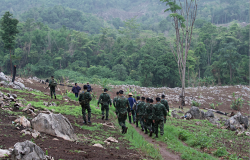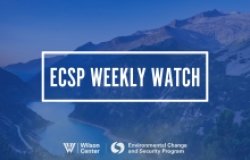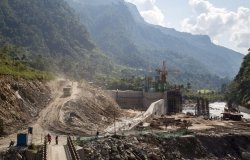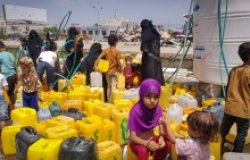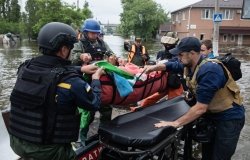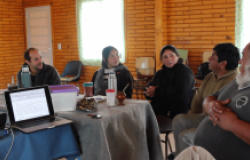Conservation NGO Breaks Down Barriers Between Family Planning, Health, Conservation
NOVEMBER 2008—Vancouver Conference Features "Poverty, Population Growth, and Consumerism" Theme
For three days in October, members of the conservation and development communities gathered in Vancouver at the Conservation Learning Exchange (ConEx), a conference organized by The Nature Conservancy (TNC), to learn about innovative ideas in their fields. At "Breaking Barriers: Family Planning, Human Health and Conservation," one of the panels under the "Poverty, Population Growth, and Consumerism" theme, speakers investigated the linkages between health, population, and environment issues and discussed the advantages and disadvantages of a conservation organization offering health and family planning services.
Gib Clarke of the Wilson Center's Environmental Change and Security Program opened the panel by outlining the environmental impacts—both local and global—of population growth and other demographic issues. He provided an overview of how population-health-environment (PHE) programs integrate each sector to improve their performance, increase efficiency, and lower overall costs. "By attending to people's immediate needs, such as health, PHE programs can increase community support for conservation," said Clarke. "PHE programs also offer health projects an entry point to remote rural areas," he added.
Dario Merlo of the Jane Goodall Institute (JGI) discussed JGI's Community-Centered Conservation Program in the Democratic Republic of the Congo (DRC-CCC), which seeks to conserve the region's unique biodiversity, including 90 percent of all eastern lowland gorillas, 80 percent of the country's intact forest, and the largest headwaters in the Congo basin. Conservation—never easy—is extremely difficult in the DRC, given illegal mining, poaching, deforestation, and ongoing conflict. The DRC-CCC program has overcome these challenges by focusing on local communities and their needs: helping establish a hydroelectric power plant, improving knowledge and practices related to fish farming and livestock rearing, and equipping 300 community eco-guards who enforce park rules. The program has also worked with local residents to rebuild health clinics, provide bed nets and anti-malarial medications, and train and furnish health care workers with family planning information and supplies.
Kenya's Kiunga Marine National Reserve faces substantial challenges, said the World Wildlife Fund's (WWF) Sam Weru, including illegal fishing and mangrove harvesting, oil and gas exploration, the unsustainable global demand for fish, and the population's reliance on natural resources for their livelihoods. To confront these challenges, WWF has developed an unlikely strategy: offering health services to garner goodwill with local residents and convince them to improve their natural resource management; and offering family planning to decrease population pressure on precious local resources. This conservation strategy also includes beach clean-ups and a focus on livelihoods that are less heavily dependent on natural resources.
TNC's Kristen Patterson introduced a case study from Komodo National Park in Indonesia, where TNC is beginning to introduce health and family planning components into its existing conservation program. Meeting participants discussed possible strategies for TNC and other conservation organizations to broaden their scope in a similar fashion. Although there were differences of opinion, many attendees raised the following concerns:
- Health and population affect conservation, so they are valid issues for TNC to target. However, it is not clear that they should be priorities. Some participants expressed concern that if conservation organizations begin to prioritize health and family planning, their mission might drift too far from conservation.
- Conservation organizations may not have the expertise to implement health and population programs, so partnering with other organizations is critical.
- As population, health, livelihoods, and other programs are introduced, it can be difficult to manage local communities' expectations, as they may believe the PHE program can address all of their needs.
Related Program

Environmental Change and Security Program
The Environmental Change and Security Program (ECSP) explores the connections between environmental change, health, and population dynamics and their links to conflict, human insecurity, and foreign policy. Read more
